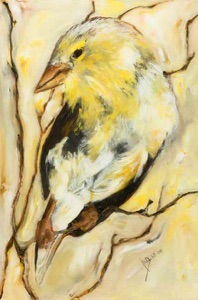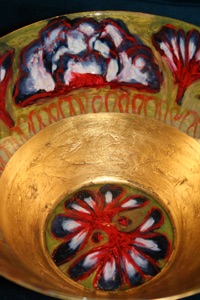VERRE ÉGLOMISÉ
Though practiced before the Roman era, reverse painting and gilding on glass were rediscovered and popularized in the 1760’s by Frenchman and Art amateur Jean-Baptiste Glomy (1711-1786) - thus the term “verre églomisé”. Before and since, the technique has had long stretches of obscurity and repeated periods of resurgence.
Reverse painting involves the application of paint to glass on its back side, viewing the painting through the front. Immediately against the glass are foreground layers that are painted first, then are added the layers that become the background. This is the opposite of conventional painting where the foreground is painted over the background.
My interest in verre églomisé started in a roundabout way. I learned painting in egg tempera as a prerequisite to fresco painting. Egg tempera has a long history of application to glass. Traditionally, this kind of painting is the realm of icon painting done in a naïve medieval style. For me, using artist’s oils instead of egg tempera offers an updated, much more flexible, durable, versatile, and rich means of expression.
Reverse painting also has decorative applications to non-flat surfaces such as glass vessels of different shapes. Functional glass objects may be greatly elevated by colorful motifs showing through the glass and backed by metal leaf, otherwise known as gilding. The process of gilding is the ancient application of tissue-thin squares of metal to previously prepared surfaces. In my case, the metal leafs might show as the inner face of a bowl, or the back side of a plate. The painting itself would be nestled between the gilding and the glass, imbuing a common useful object with vibrant visual life.
PAINTINGS
VESSELS


